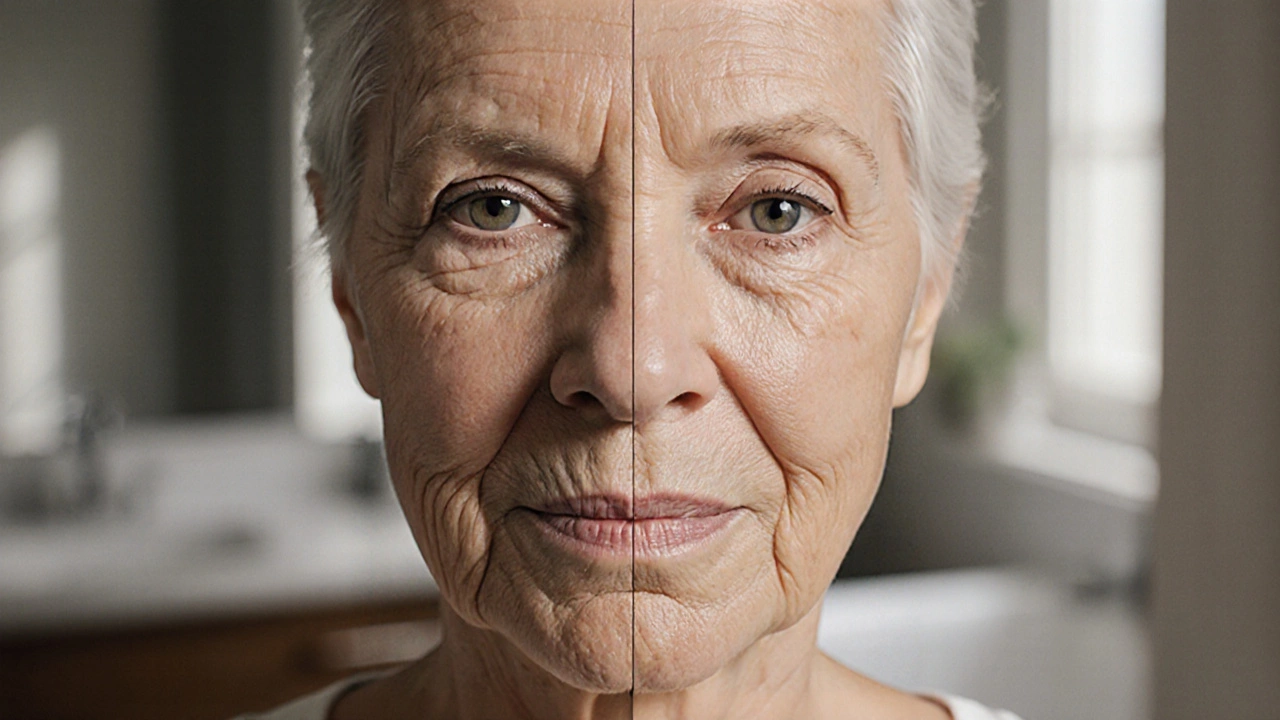Sunscreen: Your First Line of Defense for Radiant Skin
When working with sunscreen, a topical product designed to shield skin from harmful ultraviolet (UV) radiation. Also known as sunblock, it helps prevent sunburn, premature aging, and skin cancer. The SPF, the numeric rating that measures how well a product blocks UVB rays tells you how long you can stay in the sun before burning. A broad‑spectrum, formulation that protects against both UVA and UVB rays is the gold standard for true protection. Together they form the core of any effective sun safety routine.
Why does this matter? UV exposure is a major driver of skin aging, breaking down collagen and triggering pigmentation. sunscreen usage every morning reduces those risks, acting like a daily anti‑aging shield. Studies link consistent SPF use to fewer fine lines and less sagging, complementing other anti‑aging habits like drinking green tea or using vitamin C serums. In other words, daily sunscreen is a critical step in the AM skincare routine that many of our readers already follow.
Not all sunscreens are created equal. Chemical filters absorb UV light, while mineral options such as zinc oxide reflect it. Choosing the right type depends on your skin’s needs – oily skin often prefers lightweight, non‑comedogenic formulas, whereas sensitive skin may benefit from mineral versions that are less likely to irritate. Both types can be broad‑spectrum, but the ingredient list tells you which strategy the product uses.
Application matters as much as the product itself. Experts recommend about a teaspoon for the face and neck, and reapplying every two hours—or after swimming, sweating, or toweling off. Missed reapplication can drop protection by half, which is why many dermatologists suggest setting a phone reminder. Pairing sunscreen with antioxidant serums, like vitamin C, creates a double‑layer defense that neutralizes free radicals generated by UV rays.
For mature skin, especially those over 50, sunscreen should be part of an organic skincare line that focuses on soothing ingredients and collagen support. Look for products that combine SPF with nourishing agents like hyaluronic acid or niacinamide. These combos keep skin hydrated while guarding against sun‑induced dryness and age spots, delivering both protection and care in one step.
Even if you’re dealing with acne or hyperpigmentation, sunscreen is non‑negotiable. Many acne‑treating formulas can be drying, making the skin more vulnerable to UV damage. A lightweight, oil‑free sunscreen prevents flare‑ups and stops dark spots from deepening. If you’re using prescription retinoids, sunscreen becomes even more essential, as retinoids increase photosensitivity.
When you shop for sunscreen, think about your lifestyle. Outdoor athletes favor water‑resistant, high‑SPF options, while city dwellers may opt for a daily moisturizer‑sunscreen hybrid. Subscription boxes often include mini sunscreen samples, letting you test multiple brands before committing. Knowing the difference between SPF 30 and SPF 50, and how broad‑spectrum adds UVA protection, helps you pick the right level of defense for any scenario.
Now that you understand how sunscreen fits into a complete skin‑health strategy, explore the articles below. You’ll find deep dives into SPF math, product reviews for every skin type, tips for reapplying on the go, and expert advice on pairing sunscreen with anti‑aging drinks and organic routines. Let’s get into the details that will keep your skin glowing and safe all year long.

